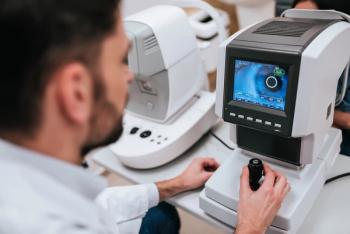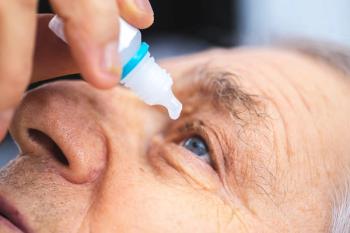
CIME 2024: Confronting Demodex blepharitis with advanced treatment
Marc Bloomenstein, OD, FAAO, discusses how optometrists can proactively manage Demodex blepharitis by regularly examining eyelids, diagnosing the condition early, and offering treatments to effectively eradicate the mites and prevent future complications.
Marc Bloomenstein, OD, FAAO, speaking from the Controversies in Modern Eye Care meeting, highlights the prevalence of Demodex blepharitis. Bloomenstein discusses its simple diagnosis and emphasizes the importance of proactive care to prevent complications. He and James A. Katz, MD, presented a session titled 'Under the Microscope—Confronting Demodex Blepharitis With Advanced Treatment' during the May 4 meeting in Los Angeles, California.
Video Transcript
Editor’s note - The following transcript has been lightly edited for clarity.
Marc Bloomenstein, OD, FAAO:
Hi, everybody! It's Dr. Marc Bloomenstein here in I'd like to say sunny Los Angeles, but it's a little bit overcast. I'm at the Controversies in Modern Eye Care meeting and I just came off of a session with Dr. Jim Katz.
We were talking about Demodex [blepharitis] and more importantly the fact that this is a condition that is extremely prevalent in our practices. In fact, 58% of all adults actually have Demodex blepharitis.
The diagnosis of this is quite simple. It's basically just have your patients look down. We're looking for those collarettes, that waxy kind of debris that is at the base of the lashes. We have about 150 lashes but it only takes one. When you see one lash that has collarettes then you know that that is 100% pathognomonic for Demodex blepharitis. Now, you may be saying patients aren't coming in with symptoms and some of those symptoms might be itching, irritation, grittiness to the eyes. But the signs oftentimes are there and the signs can be redness, erythema, loss of lashes.
But more importantly, it's what could happen in the future. We've never really had a good treatment for the Demodex and one of the things that Dr. Katz talked about was the things that we've been doing to manage it, whether it be tea tree oil or some of us use ivermectin or even just lid scrubs or blepharoexfoliation. But fortunately we now have an FDA-approved medication, lotilaner, which basically goes in and kind of eradicates the mites. It paralyzes them. We keep them on it twice a day for 6 weeks, which allows us to get rid of the eggs because the lifecycle of these tends to be about 14 to 18 days.
So one of the exciting things that we just talked about is the fact that we're not waiting for patients to be symptomatic. We're being proactive and preventative and looking for those early, early symptoms, which could be blurred vision, which could just be the fact that patients are having some challenges with contact lenses. So do yourself a favor, get out there, look on the lids, look for some Demodex, and help your patients to manage that.
So as optometrists who are managing Demodex, what this could mean is that you can keep your patients in their contact lenses longer. Interesting enough, there was a carve out of this study that was done, which found that 58% of adult patients have Demodex. Of that 58%, the patients that had contact lens intolerance, 90% of those patients wore contacts.
Most patients come into an optometric practice because they're looking to get better quality of vision, manage fluctuation, maybe just kind of learn about opportunities to manage their myopia or hyperopia and even presbyopia and if we're not managing the Demodex, if we're not managing the blepharitis, then we're losing sight. I like the pun there. We're losing sight of helping them with their vision.
Newsletter
Want more insights like this? Subscribe to Optometry Times and get clinical pearls and practice tips delivered straight to your inbox.








































